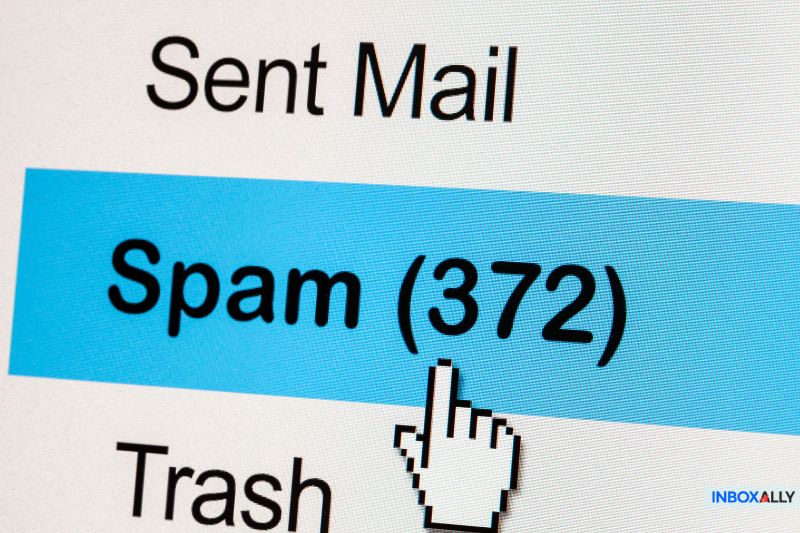These days, our inboxes are packed with emails. Some are quick and to the point—like order confirmations or shipping updates—while others are designed to grab your interest with promotions or discounts. Both have their place, but they clearly play very different roles.
Transactional emails keep you informed, while marketing emails keep you engaged and excited about what’s next. But if you mix the two carelessly, things can go very wrong. Important updates can be lost in the noise, and marketing emails might not even make it to the inbox.
In this article, we’ll explore what makes these email types unique, why keeping them in their lanes matters, and how they can work together to do great things for your business. Let’s begin!
What Are Transactional Emails?
![]()
Transactional emails might not be all that fun, but they’re absolutely essential for keeping customers informed and happy. They are designed to give people exactly what they need right when they need it—whether it’s password reset requests or confirmation that their new shoes are on the way.
Here are some traits of transactional emails to keep in mind:
- Triggered by User Actions: Transactional emails respond directly to user activity—sign up for an account or make a purchase, and they follow up with what you need, like a welcome email or an order confirmation.
- Personalization: Including details like the customer’s name or order specifics makes these emails feel relevant and meaningful, which in turn creates a better user experience.
- Important Info: From shipping updates to payment confirmations or password reset links, they deliver the important details customers rely on.
These emails handle many situations where timely communication is non-negotiable. Each one serves a specific purpose to make sure the message gets across exactly when needed.
Examples of transactional emails include:
- Password resets with secure, time-sensitive links.
- Order confirmations detailing purchased items and payment info.
- Shipping notifications complete with tracking numbers and delivery updates.
- Account updates notifying users of changes to their details or subscriptions.
Ultimately, the role of transactional emails is simple but vital. They build trust by delivering the updates customers expect, keeping everything running smoothly.
Why They Matter
Transactional emails go beyond basic updates—they’re an integral touchpoint for building trust and maintaining professionalism. When customers get timely, accurate information like a shipping update or an account change, it shows reliability. These emails also reflect your brand’s personality, subtly reinforcing your voice and showing that every interaction, no matter how small, matters.
What Are Marketing Emails?
On the flip side, we’ve got marketing emails—the driving force behind engagement and growth. These messages are built to promote products, services, or events to a wide audience, not just one person. Unlike transactional emails, which respond to individual actions, marketing emails are sent in bulk as part of larger, strategic email campaigns.
Here are a few key characteristics of marketing emails:
- Bulk Distribution: These emails go out to large groups which can be specific segments or your entire email list. They’re built for scale.
- Promotional Intent: The goal of a marketing email is to grab attention, encourage action, and keep your brand in the spotlight. Whether it’s announcing a sale or sharing a new blog post, their purpose is to drive engagement and conversions.
- Engagement Focus: Marketing emails often include eye-catching visuals, punchy subject lines, and clear call-to-action (CTA) buttons. They’re designed to get clicks and encourage responses.
While not all marketing emails are directly trying to sell something, they represent every business’s effort to keep their latest products, services, or updates fresh in their minds. There are several types of marketing emails:
- Newsletters: Regular updates with valuable content, industry insights, and company news, all aimed at keeping the audience informed and engaged.
- Promotional Offers: Discounts, limited-time deals, or product launches designed to encourage immediate action.
- Product Announcements: Announcements about new products or features to build excitement and draw attention.
- Event Invitations: Invitations to webinars, workshops, or in-person events to deepen engagement.
Role in Nurturing Leads and Building Brand Awareness
Marketing emails are your brand’s way of keeping the conversation going. They help build relationships, keep you on your audience’s radar, and move leads closer to becoming loyal customers. When done right, they don’t just sell—they add value, build trust, and show you care. With some segmentation and personalization, these emails feel relevant and personal, leaving a lasting impression on your readers.
Transactional and Marketing Emails: Two Distinct Roles
Transactional and marketing emails are both essential but serve very different purposes. Typically sent from separate subdomains to protect sender reputation, their main differences can be summarized as follows:
| Aspect | Transactional Emails | Marketing Emails |
| Purpose | Updates or confirmations (e.g., order confirmation, password reset) | Engage existing customers, promote products, or encourage sales |
| Triggers | Sent automatically when a user does something (e.g., makes a purchase) | Sent at specific times as part of a planned campaign. |
| Audience | Sent to individual users with personalized content | Sent to larger groups based on segments. |
| Content Focus | Provides important, personal information | Offers promotions or content meant to grab attention |
| Subdomains | Usually sent from a dedicated subdomain for better deliverability | Sent from a separate subdomain to prevent issues with email delivery |
The differences between transactional emails and marketing emails show up in performance too. Transactional emails tend to have sky-high open rates—around 70% or more—because recipients expect and value their content.
Marketing emails, on the other hand, usually see open rates in the 10–30% range, depending on how attention-grabbing the subject lines and content are. They also face tougher deliverability hurdles since inbox providers keep a closer eye on promotional messages.
Legal requirements add another layer of distinction. Marketing emails must comply with strict rules, like opt-in agreements and a clear unsubscribe link, to meet regulations like GDPR and the CAN-SPAM Act. Transactional emails don’t have these same obligations, but they still need to be clear, transparent, and professional.
Having trouble with email deliverability or keeping your sender reputation in check? InboxAlly can help! By simulating real subscriber interactions, it makes sure all your emails land right where they need to be. Give InboxAlly a try today and see how much it can improve your email success!
Why It’s Important to Separate Transactional and Marketing Emails
The best approach in email marketing is to treat transactional and marketing emails differently. This prevents the typical issues that arise when transactional emails are lumped together with less favorable marketing emails. But what exactly makes separating them so beneficial?
Deliverability Benefits
The main reason for separating transactional and marketing emails is to protect deliverability. Transactional emails like password resets or order confirmations are important and need to arrive on time. If they share the same infrastructure as marketing emails, which often have lower engagement rates, there’s a higher risk they’ll be flagged as spam.
Managing Subscriber Preferences
As mentioned, marketing emails have to follow strict rules, like those under GDPR or the CAN-SPAM Act, which require clear opt-ins and easy ways for people to unsubscribe.
Transactional emails, however, don’t fall under the same guidelines since they’re used for completing user actions. Keeping them separate is the best to respect subscriber preferences and get important messages through when needed.
Protecting Sender Reputation
Email providers look at things like engagement rates, spam complaints, and bounce rates to evaluate your sender reputation. Separate IPs, domains, or subdomains for transactional and marketing emails make sure that any ups and downs in your promotional emails don’t mess with the deliverability of transactional messages.
If your sender reputation is already damaged, InboxAlly could be the solution. Through seed lists that mimic genuine subscriber interactions, InboxAlly naturally rebuilds your reputation and improves your deliverability—no stress, no hassle. Give it a try!
How Marketing and Transactional Emails Can Work Together
Separating these emails makes perfect sense, but can transactional and marketing emails ever work together? Absolutely! With the right approach, transactional emails—like order confirmations or shipping updates—can include subtle marketing touches to boost engagement.
Here are a few creative ways for integration:
- Shipping Confirmations: Update customers on their order’s status while suggesting complementary products. For example, a laptop order could include recommendations for a bag or wireless mouse, adding value without disrupting the email’s purpose.
- Welcome Emails: When someone signs up or creates an account, a welcome email is often the first interaction they have with your brand. Use this chance to introduce your company, offer a discount, or share helpful resources like guides or tutorials.
- Order Confirmations: After a customer places an order, an order delivery confirmation email reassures them that their purchase was successful. It’s also an opportunity to invite them to explore additional benefits, like joining a loyalty program or earning rewards on future purchases. A simple “Thank you for your order! Earn points by joining our rewards program” can nudge them toward deeper engagement.
The trick is keeping these subtle so they add value without taking away from the main point. The focus should always be on keeping things clear and useful so that the email does exactly what the user expects.
Building Brand Consistency
Keeping your branding consistent across both types of emails helps reinforce a professional image. From tone and design to visuals, this alignment creates a smooth and trustworthy experience for your customers.
When done right, even routine emails can become meaningful moments that encourage engagement while staying true to the primary purpose of each type of email.
Deliverability Challenges for Transactional and Marketing Emails
While it might seem easier to lump all emails together, keeping transactional and marketing emails separate can do wonders for your email deliverability. Why? Because email service providers (ESPs) handle these two types very differently. Transactional emails often get priority placement in inboxes. Marketing emails, on the other hand, face tougher scrutiny due to their promotional nature, especially when sent in bulk.
Using dedicated IP addresses or domains for each email type helps protect your sender reputation. If a marketing campaign triggers unsubscribes or spam complaints, your transactional emails stay unaffected. This way, you can keep delivering important messages without breaking your customers’ trust.
Emails need good deliverability to get the job done. Transactional emails must be quick and dependable, while marketing emails need to pass spam filters and keep your reputation intact. InboxAlly can help you nail both—give it a try and see the results firsthand.
Final Thoughts
To wrap it up, here’s the bottom line: knowing how to manage your transactional and marketing emails isn’t just smart—it’s a must for keeping the lines of communication open, building trust, and helping your business thrive. Whether you’re confirming an order or rolling out a promo, treating these two differently ensures your customers stay on track, and your sender reputation stays strong!
And if you’re ready to take your email deliverability and reputation to the next level, give InboxAlly a try! It’ll help your emails land in your customers’ inboxes every time!





